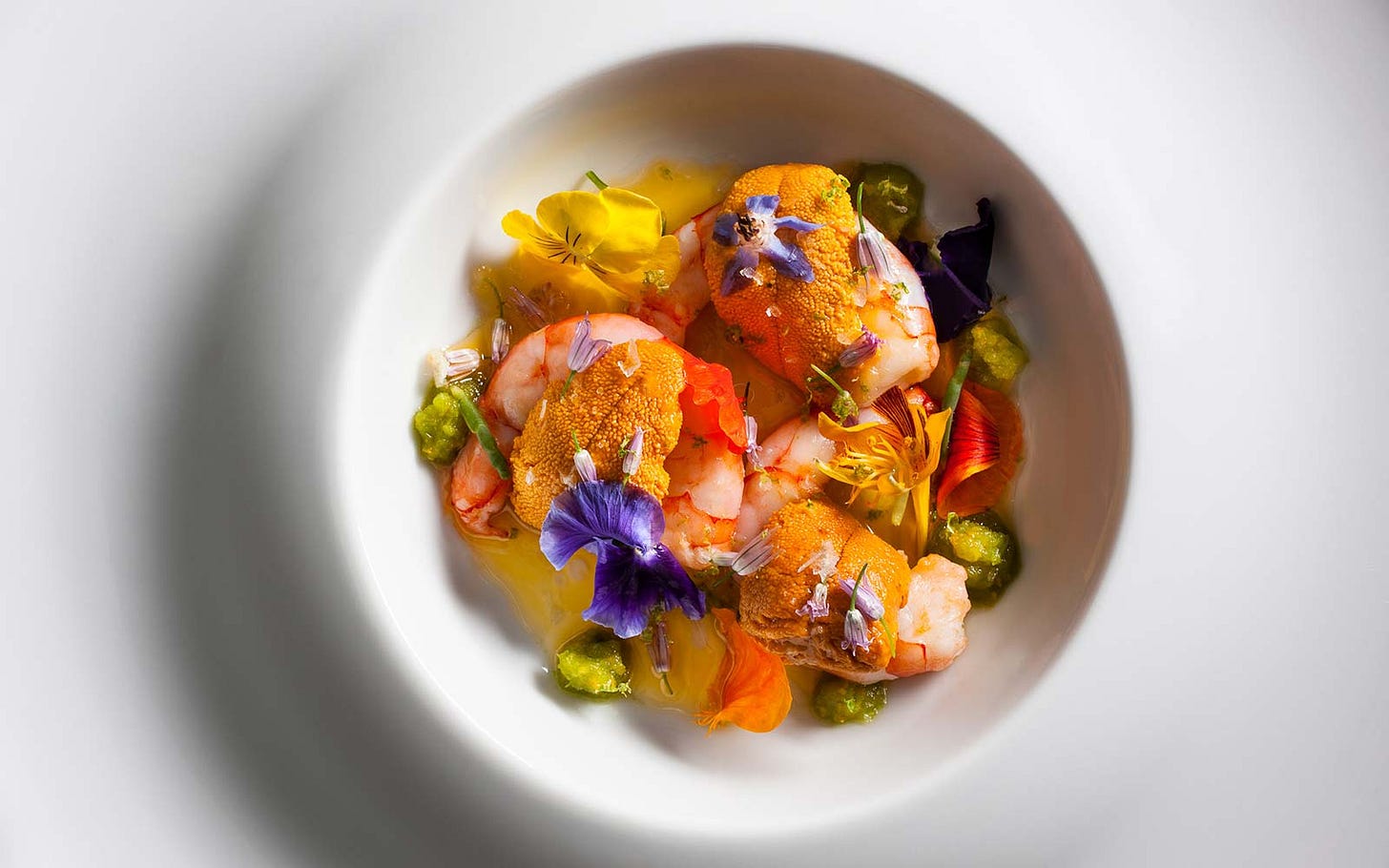Food is mysterious and wonderful. I’ve been thinking about food - particularly the last mile of the food system - as a broad analogy for the creative process of delivering outcomes.
Simple molecules from our earth get cultivated, organized, shipped, distributed, combined, then served for a sensory experience. In every culture people gather, form tradition, and find joy in the creative, sensory expression of a chef and their story.
I wrote about working at a three Michelin star restaurant (nearly ten years ago now) and with my research into complex systems I reflect on the balance between chaos, order, and the sweet spot of creativity in between. It takes a lot of order to keep the food system running.
Intricate global supply chains churn and deliver ingredients to central distribution centers, which then send raw foods to restaurants where raw compounds are transformed into a sensory experience by brigades of chefs.
Management thoughts
Our food systems are still at the whim of natural phenomena like weather patterns. Supply chains are delicate and can break down unexpectedly. Kitchens are known to be riotous, demanding workplaces. Diners are fickle and customer preference changes over time. Yet through it all, cuisine prevails and culture continues. Creativity remains.
To achieve desirable emergent outcomes from a complex system you need to design both rigid order and unbounded creativity. The question then is where to impose order, and where to allow creative freedom?
Lesson 1: When results are time bound, impose role clarity.
You’ve heard the phrase “too many cooks in the kitchen.”
In the late 1800’s French chef Auguste Escoffier, working at the Savoy Hotel in London, elevated fine dining by implementing the brigadier system into the kitchen. What we know today in western cuisine - head chef, sous chef, station cooks, expediter, dishwasher, etc. - is the result of Escoffier imposing role clarity and focus into the system to reduce the riotous chaos of too many ideas and unclear expectations about decision authority.
Lesson 2: Complicated is easy, simple is hard. Choose simple.
The amazing documentary Jiro Dreams of Sushi follows the life of Japanese sushi master Jiro and his routine toward perfection. Every detail matters, and is taken seriously - how the rice is cooked, fish cut to razor precision, presentation, and honor to the craft.
The constraint of simplicity channels creativity because there is nowhere to hide uncertainty, sloppiness, or incomplete thoughts. The team must focus on the most important principles of the problem you are trying to solve. Complicated solutions are often the result of unclear role clarity (see Lession 1), or incomplete understanding of the problem domain itself. When a solution becomes too complicated, either delegate decisions, or learn more about the problem itself.
Lesson 3: Give space to make mistakes
There is a bit of lore surrounding the molten chocolate cake dessert.

Legend has it a young Jean Georges Vongerichten was cooking for a banquet in New York City and was in a rush to serve dessert. He pulled the chocolate cakes from the oven, quickly plated them, and sent them out to a room full of guests. To his horror, chocolate from the undercooked center oozed from the cake all over the plate. As the story goes, he received a standing ovation from the guests for this brilliant, innovative, delicious new dessert. A creative legend was born.
The lesson here is that mistakes are essential to the creative process of life. Evolution and Darwinian fitness relies on genetic mistakes to express new forms that eventually propagate into the population to form the basis for new solutions of survival.
It takes a curious and mature mindset to discern which mistakes are worth exploring, and which need correction. How do you make that call?
I can relate almost anything to a parable about food and working in the kitchen. The end result of this complex, dynamic, creative system is shared sensory experience. What could be more human that that?
Designing for emergence is a delicate art. Where to take control, and where to let chaos creep in? The takeaway is that through thoughtful and intentional constraints one can channel the creative process toward specific goals, while allowing for mistakes, messiness, and creative chaos to have their place in building the organization you desire.
Five links
Aligning ‘Decentralized Autonomous Organization’ to Precedents in Cybernetics - a working paper by Michael Zargham and Kelsie Nabben examining DAOs as a cybernetic system a la Ross Ashby
DAO Health Survey - an effort led by talentDAO and Ocean Protocol to release an open source tool and survey for evaluating the health of your decentralized community
Tokenomics Basics - a Twitter thread by The DeFi Edge explaining the basic concepts of tokenomics in web3
Diffusive Geometry - the art of Jiabao Li, who I saw present her immersive art in Santa Fe last month; in her words: “Vapor as a Tectonic Element to Sculpt Microclimates in Architectural Space”
Our organizations were never disenchanted - speaking of organizational “lore” this paper examines how narratives about an organization emerge from within





